Country
Crash of a Beechcraft A100 King Air in Big Trout Lake
Date & Time:
Feb 21, 1995 at 1248 LT
Registration:
C-GYQT
Survivors:
Yes
Schedule:
Sioux Lookout - Big Trout Lake
MSN:
B-189
YOM:
1974
Flight number:
BLS324
Crew on board:
2
Crew fatalities:
Pax on board:
9
Pax fatalities:
Other fatalities:
Total fatalities:
0
Captain / Total hours on type:
1500.00
Copilot / Total hours on type:
800
Aircraft flight hours:
13739
Circumstances:
The crew of the Beechcraft A100, C-GYQT, were conducting a scheduled flight from Sioux Lookout, Ontario, to Big Trout Lake, Ontario, as Bearskin (BLS) 324. BLS324 departed Sioux Lookout with nine passengers and a crew of two at 1133 central standard time (CST) and arrived in the vicinity of Big Trout Lake at approximately 1240. The captain briefed an instrument approach with a circling procedure to runway 14. On descent to the radio beacon, the crew reportedly encountered flight visibilities of one mile and were in visual contact with the ground. When the aircraft was less than five miles from the airport, the crew heard a position report from another aircraft completing an approach to the airport. To ensure safe separation from the aircraft ahead, the captain elected to fly under visual flight rules to the southwest of the airport. Air Traffic Services radar data was obtained from the Big Trout Lake radar source. The radar data indicated that the crew descended to about 150 feet above ground level (agl) approximately 4.5 miles from the end of the landing runway and maintained 200 to 300 feet agl for some 50 seconds prior to impact. Immediately prior to impact, the radar data indicated that the aircraft was about 3 1/2 miles from the runway at about 300 feet agl and descending at more than 1,200 feet per minute. Throughout the approach, the first officer flew the aircraft visually with occasional reference to his instruments, while the captain navigated and maintained terrain clearance by visual reference to the terrain and issued instructions to the first officer. At approximately five miles from the runway, the crew turned onto the extended centre line of the runway and received a radio report from the other aircraft of local visibilities of less than 1/2 mile. The aircraft flew inbound over a wide expanse of lake, and the captain lowered the flaps in preparation for landing. Shortly thereafter, the captain became concerned with the reducing visibility and looked in the Company Approach Procedures binder that he held on his lap. The captain was aware of the danger of whiteout and intended to revert to instrument flight if whiteout were encountered. He had not previously removed the approach chart for Big Trout Lake and clipped it in the approach chart holder because he had discovered that the binder rings were broken and taped shut when he had performed his initial approach briefing. He intended to provide new approach information to the first officer so that a full instrument approach could be initiated from their current position. When the captain looked up from the binder, he observed the altimeter indicating a descent through 1,000 feet above sea level (asl) and called to the first officer, "Watch your altitude." Before a recovery could be initiated, the aircraft struck the frozen surface of the lake and bounced into the air. The captain initiated a recovery and then, concerned with the airworthiness of the aircraft, reduced power and attempted to land straight ahead. The aircraft crashed onto the frozen surface of the lake about 3/4 mile beyond the initial impact location. All passengers and crew survived the accident. However, the crew and several passengers sustained serious injuries. Rescuers from the local community reached the aircraft about two hours after the crash and all survivors were rescued within four hours. The more seriously injured were experiencing the effects of hypothermia when rescued. The accident occurred at 1248 CST, approximately three miles northwest of Big Trout Lake Airport, at latitude 53°49'N, longitude 089°53'W, at an elevation of 690 feet asl.
Probable cause:
While the crew were manoeuvring the aircraft to land and attempting to maintain visual flying conditions in reduced visibility, their workload was such that they missed, or unknowingly discounted, critical information provided by the altimeters and vertical speed indicators. Contributing factors were the whiteout conditions and the crew's decision to fly a visual approach at low altitude over an area where visual cues were minimal and visibility was reduced.
Final Report:

Crash of a Beechcraft A100 King Air in North Adams: 1 killed
Date & Time:
Aug 4, 1994 at 1605 LT
Registration:
N7GA
Survivors:
No
Schedule:
North Adams – White Plains
MSN:
B-119
YOM:
1972
Crew on board:
1
Crew fatalities:
Pax on board:
0
Pax fatalities:
Other fatalities:
Total fatalities:
1
Captain / Total hours on type:
106.00
Aircraft flight hours:
10426
Circumstances:
The airplane had undergone routine maintenance for slow acceleration on the right engine. Maintenance records revealed the fuel controls were changed from the right engine to the left engine. The airplane was released back to the pilot for service, and he departed for his home station. Several witnesses saw the airplane after takeoff at a low altitude, and at a slow speed. The airplane turned left, and the left wing struck the ground. Two witnesses saw the airplane pass by them at a low altitude, and wrote, '...at this point we could see the left (port) engine propeller was turning very slowly. You could actually see the individual blades of the propeller turning.' A complete disassembly of both engines, revealed no discrepancies other than impact, and post impact fire damage. Disassembly of the left propeller indicated that the propeller blades were at or near feather at impact. The pilot had a total of 106 flight hours in Beech A100 aircraft, all in the 90 days prior to the accident, and 56 hours in the 30 days prior to the accident.
Probable cause:
The pilot's failure to maintain minimum control speed after an undetermined loss of engine power, which resulted in an inadvertent stall at too low of an altitude to allow recovery.
Final Report:
Crash of a Beechcraft A100 King Air in Bacău
Date & Time:
Jan 8, 1994 at 0937 LT
Registration:
OO-TLS
Survivors:
Yes
Schedule:
Oradea – Iaşi
MSN:
B-188
YOM:
1974
Crew on board:
2
Crew fatalities:
Pax on board:
8
Pax fatalities:
Other fatalities:
Total fatalities:
0
Circumstances:
The aircraft took off Oradea Airport at 0805LT with destination Iași Airport, having as alterne airport Bacău Airport. At 08.53 hrs, due to bad meteorological conditions on Iași Airport the crew requested to Bacău ACC permission for landing on Bacău Airport. Bacău ACC has granted permission and informed the crew about the meteorological conditions in that moment at Bacău Airport. The crew confirmed. During the aircraft was performing the approach procedure, the crew was instructed to contact the precision radar (PAR) and was informed that at that moment the visibility range was 800 metres. At the first approach PAR sent to the crew all the appropriate data for the radar assistance and in the final stage has asked the crew to perform a missed landing, go up to 900 metres and to contact Bacău TWR because the aircraft was away from the runway centerline (approx. 60 metres left). On Bacău TWR frequency the crew received the indication to perform a right turn to intercept the QDM 342 degrees at Bacău. It was also stated that the runway beacon is running. The crew was instructed, also, to contact PAR which assisted the aircraft, with the necessary corrections, during the approach procedure and landing until the crew reported the accident at 0930LT.
Probable cause:
Further the analysis of the flight recordings between the aircraft and the Romanian Air Traffic Services, statements and all other data contained by the investigation file the following conclusions have been reached:
- The meteorological conditions at Iași Airport were difficult and have not permitted the landing of the aircraft,
- The decision for landing on Bacău Airport was made by the crew,
- At the moment the meteorological conditions at Bacău Airport assured the minimum conditions for landing the aircraft,
- The air traffic control was performed by Bacău TWR and PAR, according to international regulations, providing permanent information regarding the aircraft during the final approach for landing.
We mention that after the first missed landing the crew maintained its decision to perform a second approach for landing, knowing the meteorological conditions on Bacău Airport.
- The meteorological conditions at Iași Airport were difficult and have not permitted the landing of the aircraft,
- The decision for landing on Bacău Airport was made by the crew,
- At the moment the meteorological conditions at Bacău Airport assured the minimum conditions for landing the aircraft,
- The air traffic control was performed by Bacău TWR and PAR, according to international regulations, providing permanent information regarding the aircraft during the final approach for landing.
We mention that after the first missed landing the crew maintained its decision to perform a second approach for landing, knowing the meteorological conditions on Bacău Airport.
Final Report:
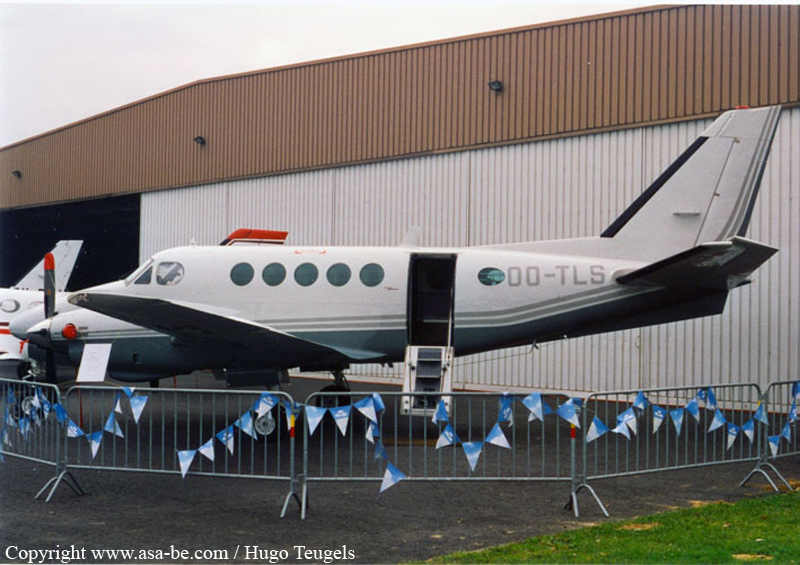
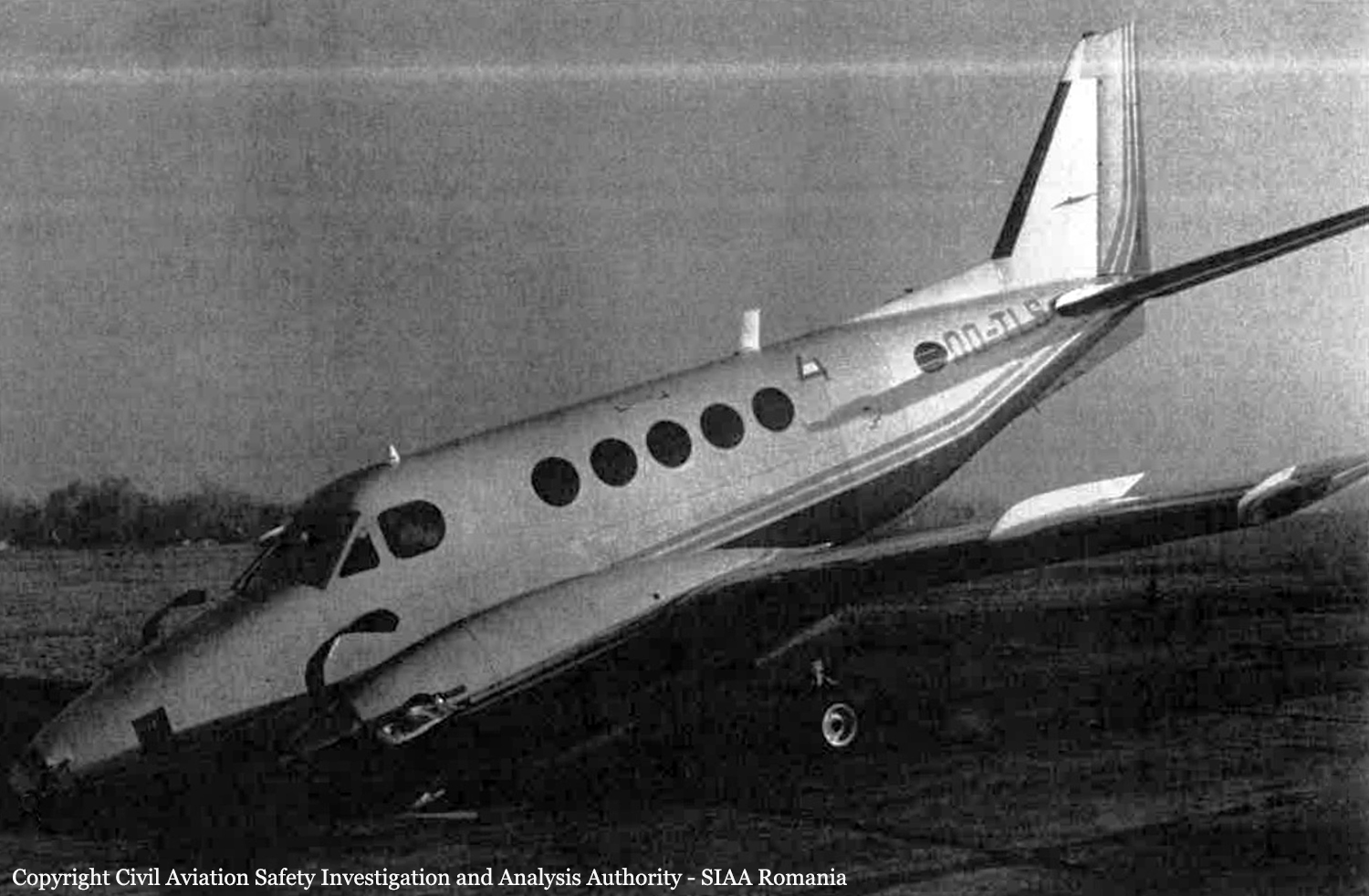
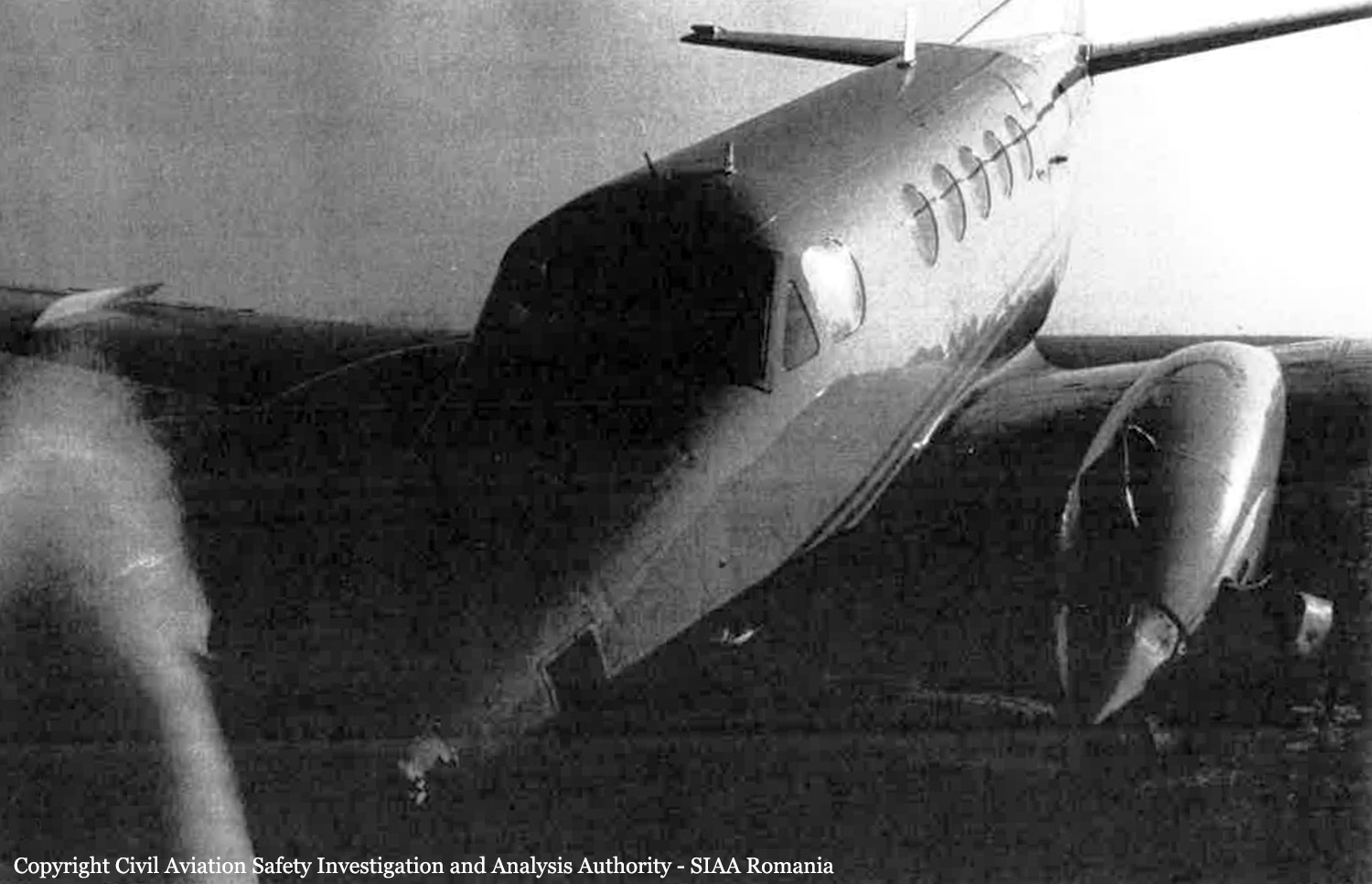
Crash of a Beechcraft 100 King Air in Foz do Iguaçu: 6 killed
Date & Time:
Feb 7, 1993
Registration:
PT-OQP
Survivors:
No
Schedule:
Curitiba - Foz do Iguaçu
MSN:
B-7
YOM:
1969
Crew on board:
2
Crew fatalities:
Pax on board:
4
Pax fatalities:
Other fatalities:
Total fatalities:
6
Circumstances:
On approach to Foz do Iguaçu Airport, the crew encountered limited visibility and failed to realize his altitude was too low when the twin engine aircraft struck tree tops and a powerline before crashing in a wooded area located one km short of runway. The aircraft was destroyed and all six occupants were killed. At the time of the accident, the visibility was poor due to heavy rain falls.
Crash of a Beechcraft B100 King Air in Romeo: 3 killed
Date & Time:
Nov 22, 1991 at 1050 LT
Registration:
N24169
Survivors:
No
Schedule:
Columbus - Romeo
MSN:
BE-38
YOM:
1978
Crew on board:
2
Crew fatalities:
Pax on board:
1
Pax fatalities:
Other fatalities:
Total fatalities:
3
Captain / Total hours on type:
99.00
Aircraft flight hours:
4298
Circumstances:
The accident airplane collided with trees and terrain after being cleared for a non precision instrument approach. Instrument meteorological conditions prevailed. The minimum descent altitude for the approach profile from an intermediate intersection to the missed approach point is 1,460 feet. The elevation of destination airport is 745 feet. The elevation of the accident site is 880 feet. Two persons witnessed the accident sequence. Both persons saw the airplane in level, low altitude flight with the landing gear down before it struck the tree tops. They described how the airplane pulled up and then rolled before it struck the ground. One witness described how the airplane was flying at the base of the clouds. All three occupants were killed.
Probable cause:
The pilot in command's improper inflight decision and the minimum descent altitude disregarded during an instrument approach.
Final Report:

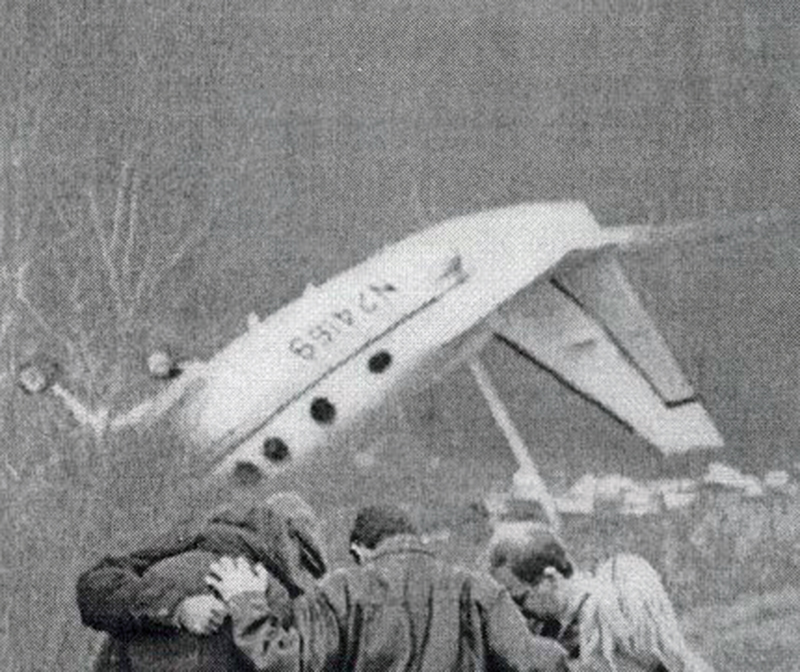
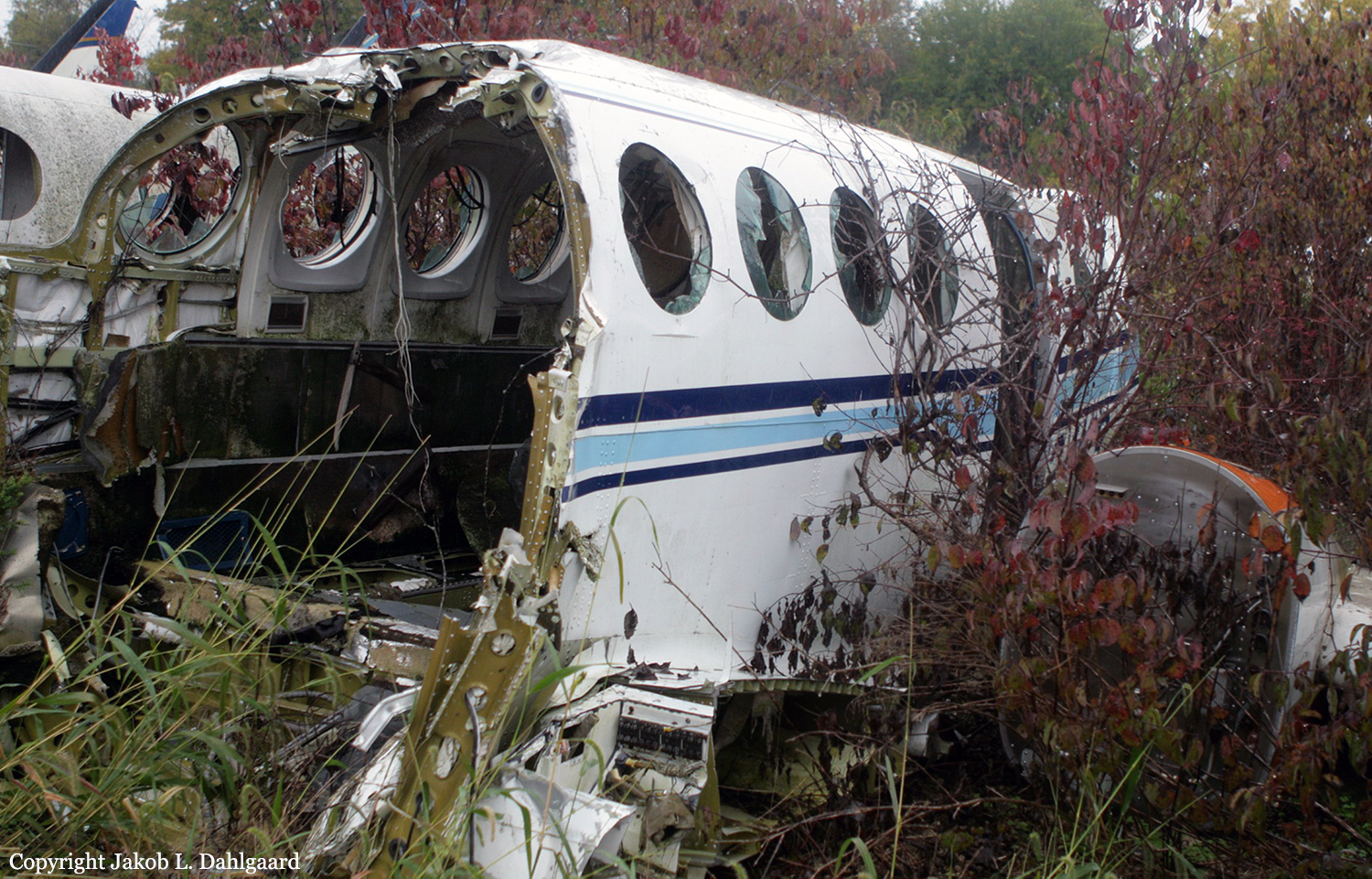
Crash of a Beechcraft 100 King Air in Uvalde
Date & Time:
Mar 27, 1990 at 1935 LT
Registration:
N696JB
Survivors:
Yes
Schedule:
Cotulla - Uvalde
MSN:
B-13
YOM:
1970
Crew on board:
2
Crew fatalities:
Pax on board:
0
Pax fatalities:
Other fatalities:
Total fatalities:
0
Captain / Total hours on type:
2700.00
Circumstances:
The pilots were making an NDB approach to an uncontrolled airport that was 941 feet msl. The NDB was 1.8 nm from the airport, and the pilots were supposed to maintain minimum descent altitude (MDA) of 1,540 feet until the runway was in sight. Prior to the crash, ATC had told them that they were 15 miles from the airport. Approximately four miles from the airport, the airplane impacted the top of a hill, at a point 990 feet msl. The airplane was demolished by impact and post impact fire. The weather was estimated to be 300 feet overcast and one mile visibility. No mechanical malfunctions were reported or discovered. The lack of a local altimeter setting increased the mda by 240 feet.
Probable cause:
Improper IFR procedure by the pilot by not maintaining the minimum descent altitude (mda) for that segment of the approach. Factors related to the accident were: darkness, low ceiling, fog, and rain.
Final Report:

Crash of a Beechcraft A100 King Air in Atlanta: 1 killed
Date & Time:
Jan 18, 1990 at 1904 LT
Registration:
N44UE
Survivors:
Yes
Schedule:
Atlanta - Atlanta
MSN:
B-140
YOM:
1973
Crew on board:
2
Crew fatalities:
Pax on board:
0
Pax fatalities:
Other fatalities:
Total fatalities:
1
Circumstances:
During arrival at night, Beechcraft A100 (King Air, N44UE) was cleared for an ILS runway 26R approach behind Continental flight 9687, then Eastern Airline (EA) flight 111 (Boeing 727, N8867E) was cleared for the same approach behind the King Air. After landing, flight 9687 had a radio problem and the tower controller had difficulty communicating with flight 9687. Meanwhile, the King Air landed and its crew had moved the aircraft to the right side of the runway near taxiway Delta (the primary taxiway for general aviation aircraft). The turnoff for taxiway Delta was about 3,800 feet from the approach end of runway 26R. Before the King Air was clear of the runway, EA111 landed and converged on the King Air. The crew of EA111 did not see the King Air until moments before the accident. The captain tried to avoid a collision, but the Boeing's right wing struck the King Air, shearing the top of its fuselage and cockpit. Some of the King Air's strobe/beacon lights were inoperative, though they most likely would have been extinguished for the IMC approach. The local controller did not issue a traffic advisory to EA111 with the landing clearance. One of the pilot on board the King Air was killed while the second was seriously injured.
Probable cause:
1) Failure of the Federal Aviation Administration to provide air traffic control procedures that adequately take into consideration human performance factors such as those which resulted in the failure of the north local controller to detect the developing conflict between N44UE and EA111, and
2) the failure of the north local controller to ensure the separation of arriving aircraft which were using the same runway.
Contributing to the accident was the failure of the north local controller to follow the prescribed procedure of issuing appropriate traffic information to EA111, and failure of the north final controller and the radar monitor controller to issue timely speed reductions to maintain adequate separation between aircraft on final approach.
2) the failure of the north local controller to ensure the separation of arriving aircraft which were using the same runway.
Contributing to the accident was the failure of the north local controller to follow the prescribed procedure of issuing appropriate traffic information to EA111, and failure of the north final controller and the radar monitor controller to issue timely speed reductions to maintain adequate separation between aircraft on final approach.
Final Report:
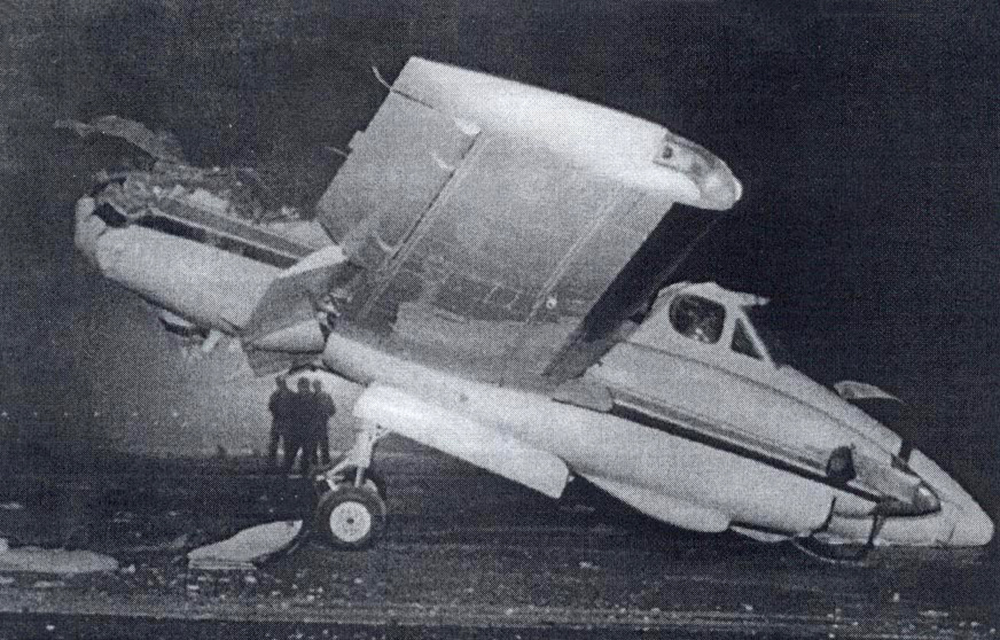
Crash of a Beechcraft 100 King Air in Houston
Date & Time:
Sep 16, 1989 at 0855 LT
Registration:
N204AJ
Survivors:
Yes
Schedule:
New Orleans - Houston
MSN:
B-10
YOM:
1970
Crew on board:
1
Crew fatalities:
Pax on board:
2
Pax fatalities:
Other fatalities:
Total fatalities:
0
Captain / Total hours on type:
48.00
Aircraft flight hours:
7351
Circumstances:
The airplane was on a positioning flight and had two passengers along for the ride. The airplane was on base leg when the left engine sputtered. The pilot turned on the secondary boost pump and the engine operated normally until both engines flamed out. During the forced landing in a residential area, the airplane hit a powerline, trees, a house, a fireplug, a tree and a van, then another house. There was no smell of fuel in the entire area, and no usable fuel in the fuel system. All three occupants were seriously injured.
Probable cause:
The inadequate preflight planning preparation & the improper inflight planning/decision by the pic when he failed to refuel the aircraft which resulted in a total loss of power in both engines.
Final Report:
Crash of a Beechcraft 100 King Air in Mayfield: 6 killed
Date & Time:
Sep 15, 1989 at 2110 LT
Registration:
N887PE
Survivors:
No
Schedule:
Orlando - Mayfield
MSN:
B-49
YOM:
1970
Crew on board:
1
Crew fatalities:
Pax on board:
5
Pax fatalities:
Other fatalities:
Total fatalities:
6
Captain / Total hours on type:
400.00
Aircraft flight hours:
9386
Circumstances:
During arrival, the flight was issued the current Paducah altimeter setting. The pilot requested vectors for an approach to runway 18, but the ARTCC controller (ctlr) could not accommodate the request. The pilot was cleared for a VOR/DME-a approach. MDA for the approach was 1,080 feet msl (600 feet agl). At 2108 cdt, the flight changed to the FBO frequency. FBO personnel observed the aircraft fly over the airport and advised that it was too low. One of the pilots replied that they would be 'staying under the clouds.' The pilots had planned to land on runway 36, but reported they lost sight of the runway and would change to runway 18. Subsequently, the aircraft collided with a tree about 1 mile north-northeast of the airport, while on a westerly heading (approximately position of base leg for a VFR pattern). The aircraft came to rest about 700 feet west of the tree and was destroyed by impact and fire. No preimpact part failure/malfunction of the aircraft was found. Approximately 30 miles west at Paducah, the weather was in part: 200 feet scattered, 900 feet overcast visibility 3 miles with rain and fog, wind from 360° at 7 knots. The airport manager estimated there was a 200 feet ceiling at the airport. All six occupants were killed.
Probable cause:
Failure of the pilot to follow ifr procedures and maintain the minimum descent altitude (MDA). Factors related to the accident were: darkness, the adverse weather conditions, and the tree.
Final Report:


